Your Guide to Nessebar, Bulgaria’s UNESCO City
9 min readOld Town Nessebar is one of the true “must see” destinations on Bulgaria’s Black Sea Coast. The old city is totally walkable and doesn’t require more than a day trip to get the full experience!
Here we will see some of the headline attractions in Nessebar, and you will come away with a great idea of what’s in store for your visit!
What is There to do in Nessebar?
Nessebar is a really beautiful ancient city, and the #1 thing to do, is…
Have a walk around!
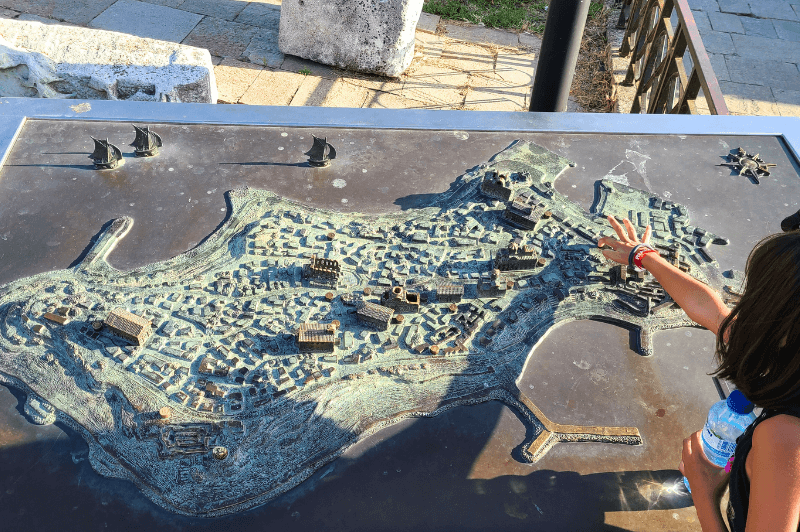

Nessebar isn’t that big, so you are safe to get lost down the little back streets. Every corner is perfect for photos, or just gazing. If you get off the main couple of streets, you will find that it is much quieter.
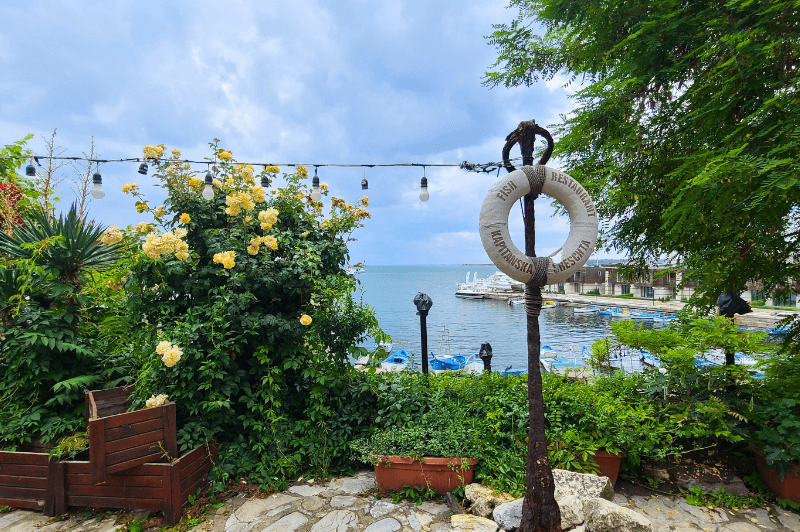

Have a coffee or lunch with a million dollar view
There are many restaurants that line the cliff and have a fantastic view over the Black Sea. The best part? You are still in Bulgaria, so nothing is crazy expensive like it would be in picturesque towns in Western Europe.
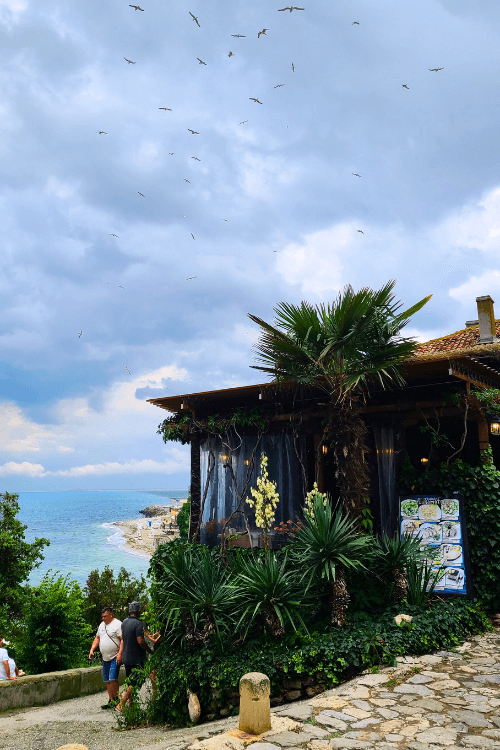

One of the best things about Nessebar, is that almost everything is free to visit! Some of the churches may ask for a very small fee to enter, but the old town itself does not have an entry fee, and most of the archaeological sites are out in the open.
Visiting the many UNESCO sites at Nessebar
I am going to be so real right now, we headed off to Nessebar for our third ever visit with the UNESCO list firmly in hand. It reads:
“The city’s remains, which date mostly from the Hellenistic period, include the acropolis, a temple of Apollo, an agora and a wall from the Thracian fortifications. Among other monuments, the Stara Mitropolia Basilica and the fortress date from the Middle Ages, when this was one of the most important Byzantine towns on the west coast of the Black Sea. Wooden houses built in the 19th century are typical of the Black Sea architecture of the period.” – UNESCO.org
The plan was to arrive for a UNESCO scavenger hunt, facilitated by Google maps and signs along the way.
While we did find some of the sites specified on the list, others didn’t come up on Google maps at all. Some of the things we saw didn’t appear on the UNESCO list, but it may be that the signage used different verbiage. So truly, it was a scavenger hunt, and we weren’t all that good at it!
Here are a few of the highlights that we did see. Whether or not they are all actually on the UNESCO list remains a mystery.
Roman Baths (Early Byzantine Terms) 527 – 565 AD
The ancient Roman baths at Nessebar are some of the oldest ruins in the old town, dating back to the 6th century AD.
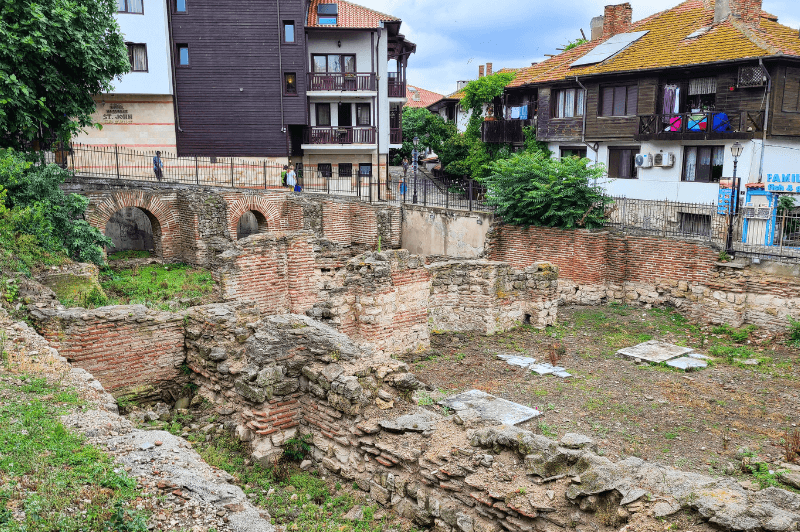

These baths remained in use for a couple hundred years, eventually closing sometime in the late 8th century.
Approximately 2/3 of the baths have been excavated and studied, but the remaining area is under the current streets and houses.
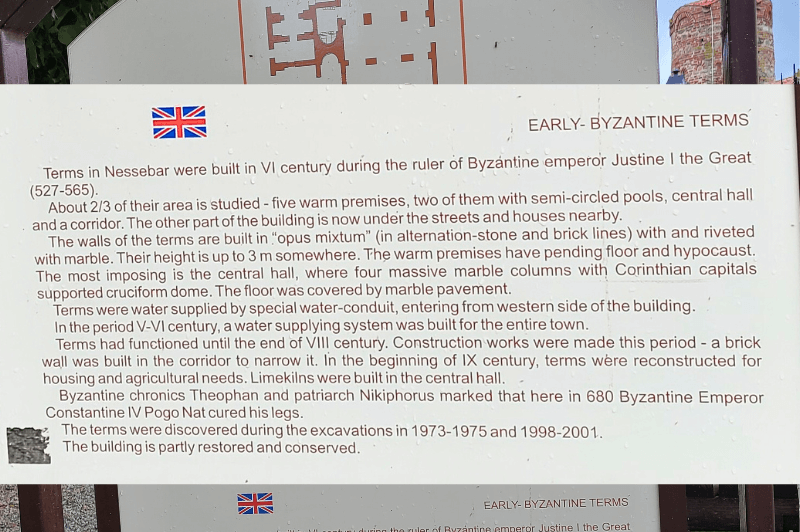

The baths would have once been an impressive structure of marble and beautiful big columns. There are actually a lot of Roman ruins in Bulgaria! You can see other baths in Varna, Hisarya, and Plovdiv.
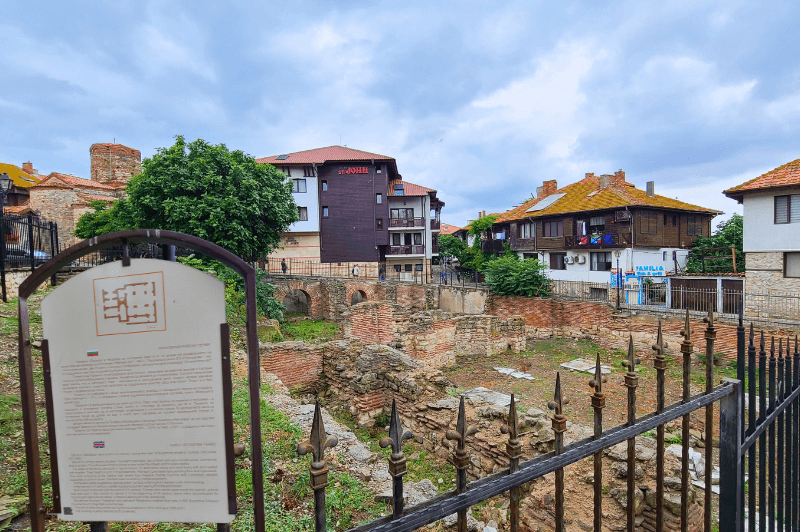

Here is the best preserved part, but unfortunately it’s behind an ugly little fence:
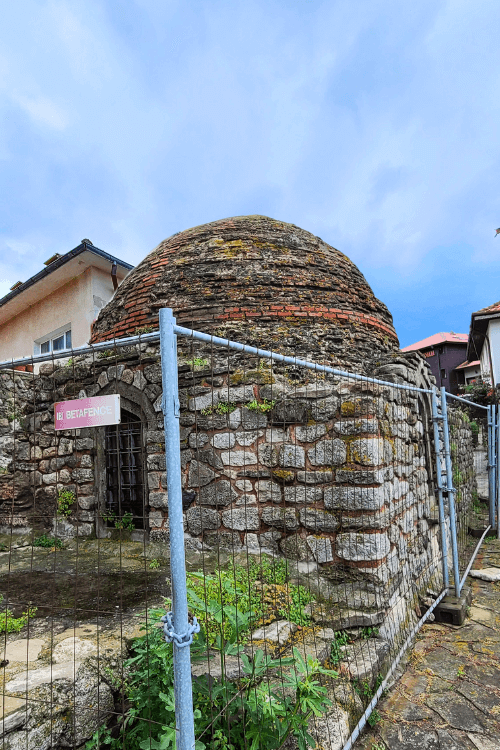

The Ancient Theater at Nessebar
There is an ancient theatre in Old Town Nessebar that curiously doesn’t come up in any of the UNESCO information, or on the website for the town itself. It does come up on Google maps, but with no information, just reviews.
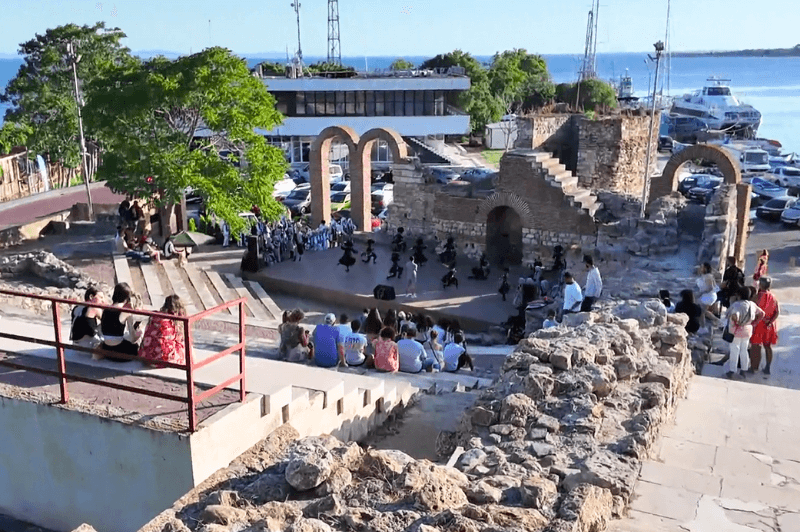

In present day this area has a stage that is used for performances, but possibly the walls were once just a part of the original fortifications, and not originally a theater? It certainly looks like an ancient theater set up, but it seems very strange that there is no information anywhere about it.
Regardless, the walls are ancient, and it is a theater, so I will call it an ancient theater!
The Windmill
Just before you reach the gates of this ancient city, you will see the beautifully preserved windmill.
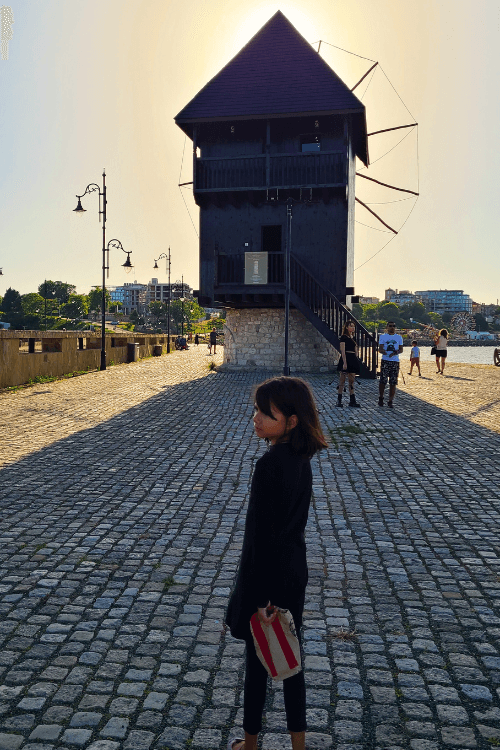

I cannot for the life of me find the picture of the sign, so I’m not sure how old it is, but I’m sure it would be included in the UNESCO classification, since the timber houses are.
Today the Windmill is also a museum.
Wooden Houses
Speaking of the timber houses, Nessebar is a proud display of the culturally significant Bulgarian homes built out of wood. These homes are preserved in very good condition all around the peninsula.
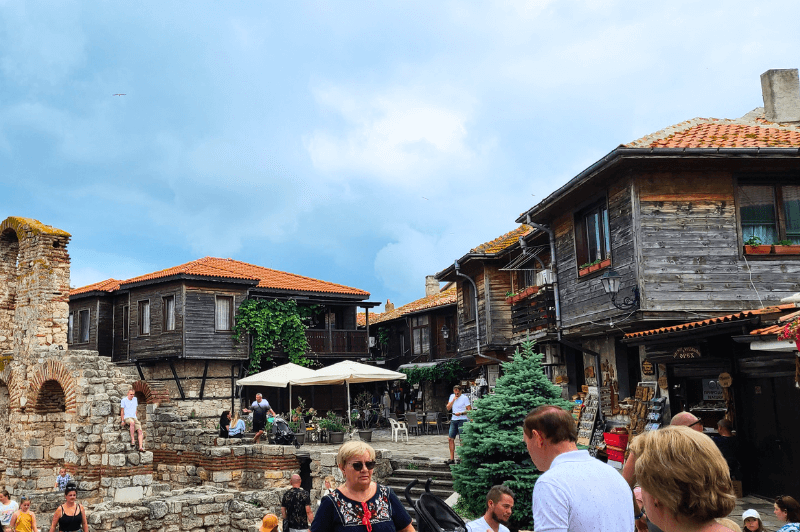

Many are now home to restaurants, souvenir shops, and ice cream parlours.
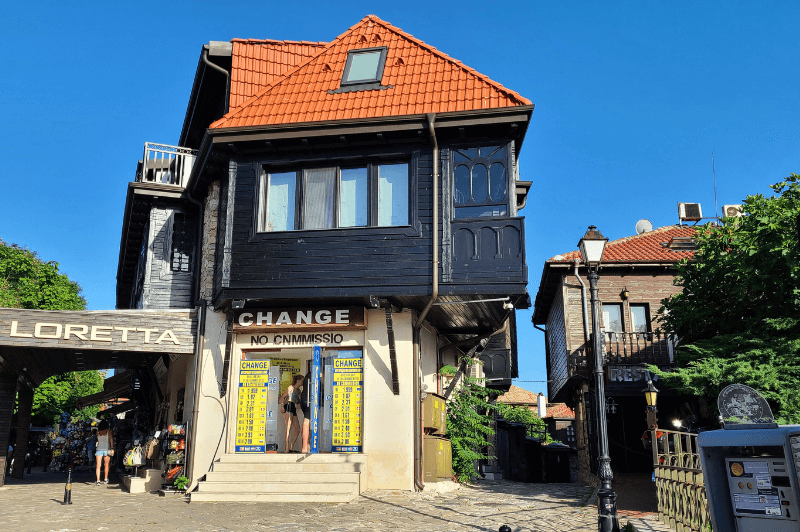

The Nessebar Old City Walls
I have a hunch that this line by UNESCO: “…the acropolis, a temple of Apollo, an agora and a wall from the Thracian fortifications ” might be referring to the ruins around the original gates and walls of the city.
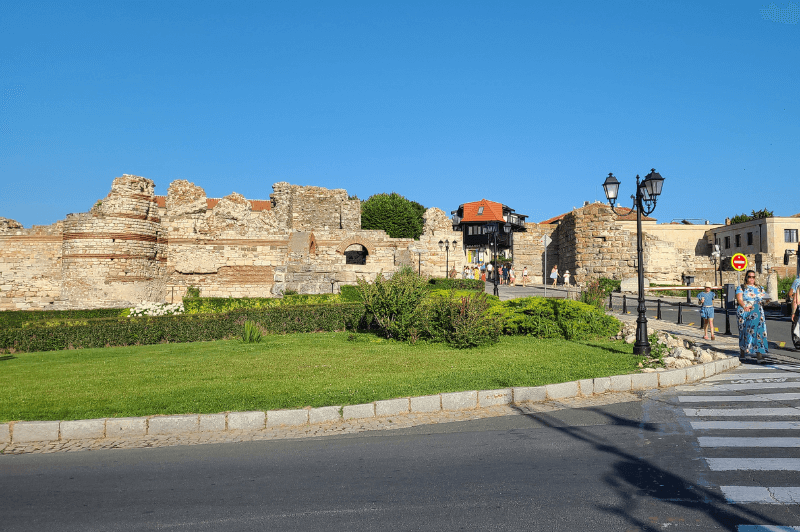

When you first arrive at the old town you are confronted by a significant ruined area, and this is the only place that I can think these sites might be, since they aren’t anywhere else on the map. This is definitely where the “wall from the Thracian fortifications” is.
If there is a way to walk through these ruins, I have no idea what it is. As far as we could tell you could just look into it. Sorry, I know that’s pretty anticlimactic, but it is an impressive sight!
St Sophia Church (Old Metropolitan Church) 5th to 6th Century AD
The Church of Saint Sophia is the real showstopper of Nessebar. The stories-tall ruins of this 5th to 6th century basilica are right in the center of the peninsula, so they are as difficult to miss, as they are un-missable!
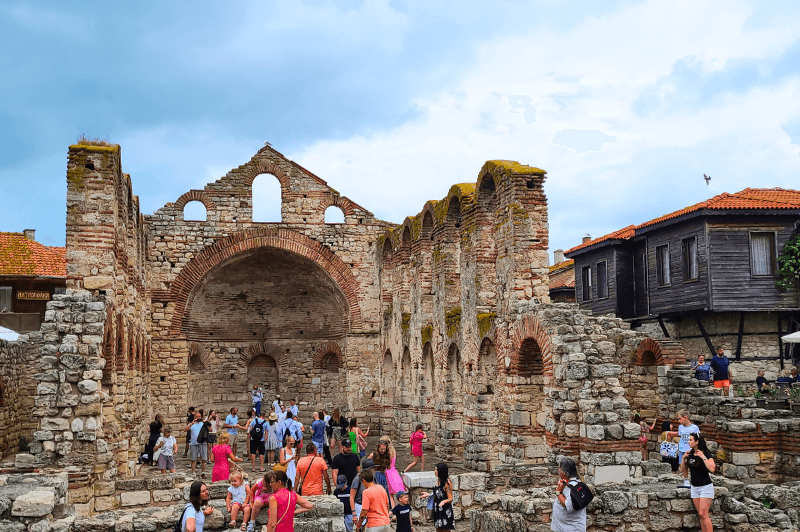

People are unfortunately very disrespectful to the ruins, and climb all over the walls and even into the front alcoves for photos. I recommend not doing that, as it will eventually lead to much more restricted access to the site (perhaps an ugly fence), and at this time we are very much free to roam.
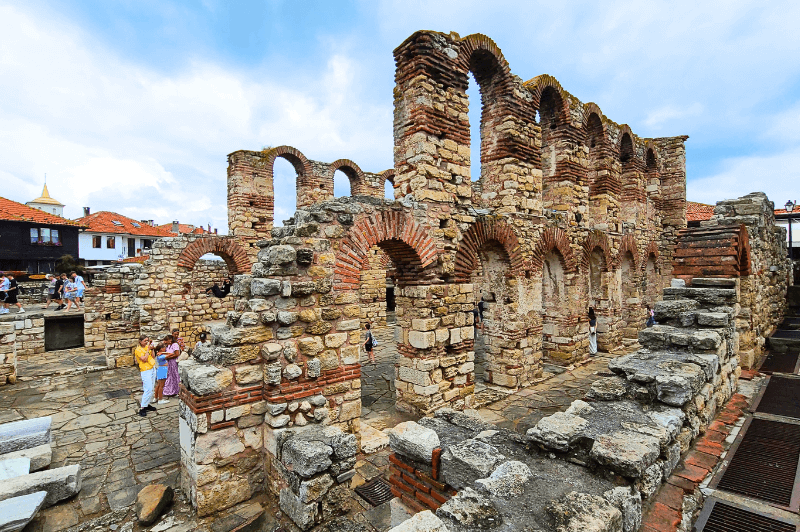

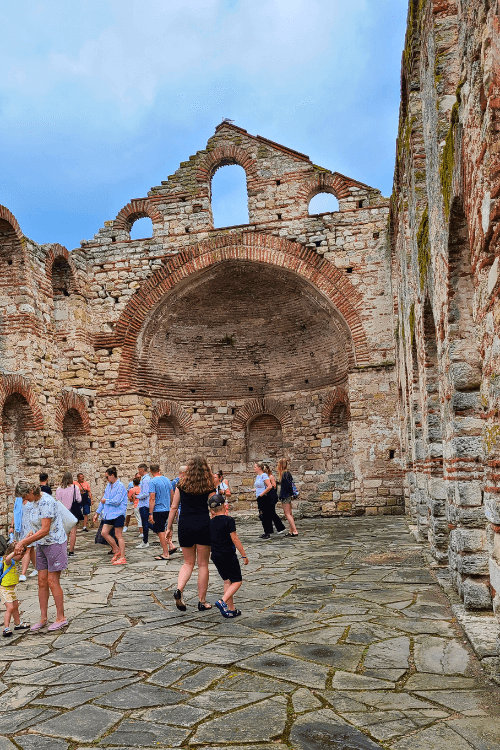

Holy Mother Eleusa Basilica 6th Century AD
From a similar time period to St. Sophia, is the 6th century basilica of Holy Mother Eleusa.
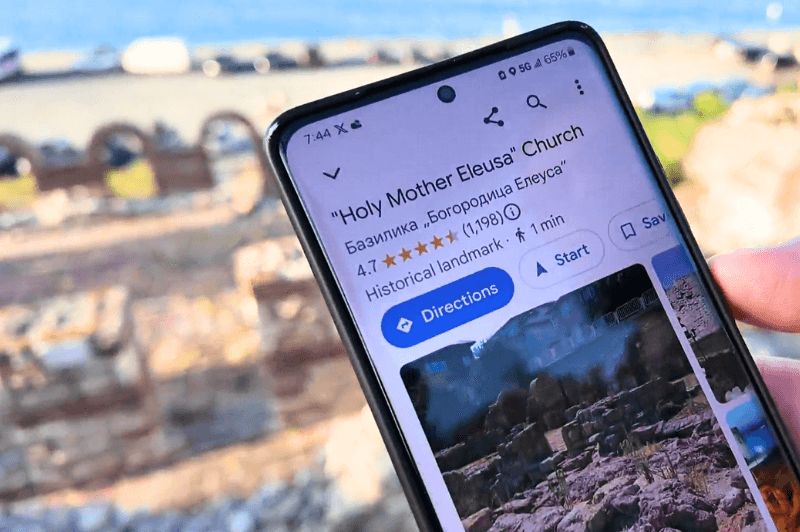

This church was presumed to have been destroyed in an earthquake. It was once a large monastery, and part of it ended up in the sea.
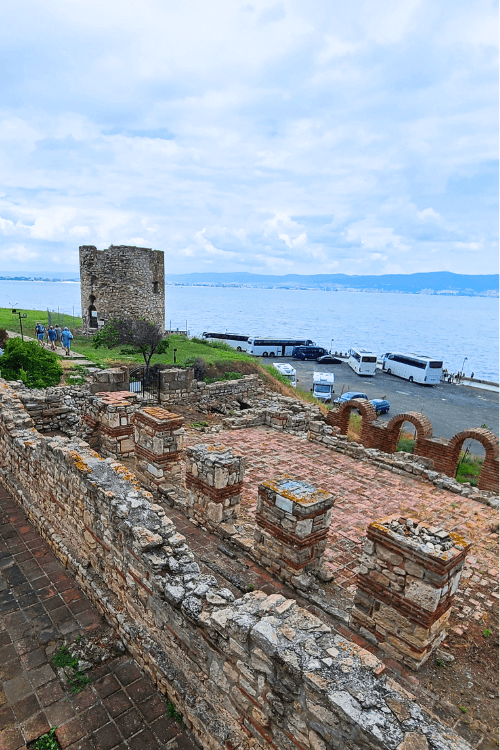

Excavations brought the church to what we see today. I saw it referred to as “well-preserved,” but that seems… like a stretch, especially considering how great the St. Sophia looks.
I’m not sure if they actually fished any of these bits out of the sea, but I do imagine it looks better than it did before the dig began.
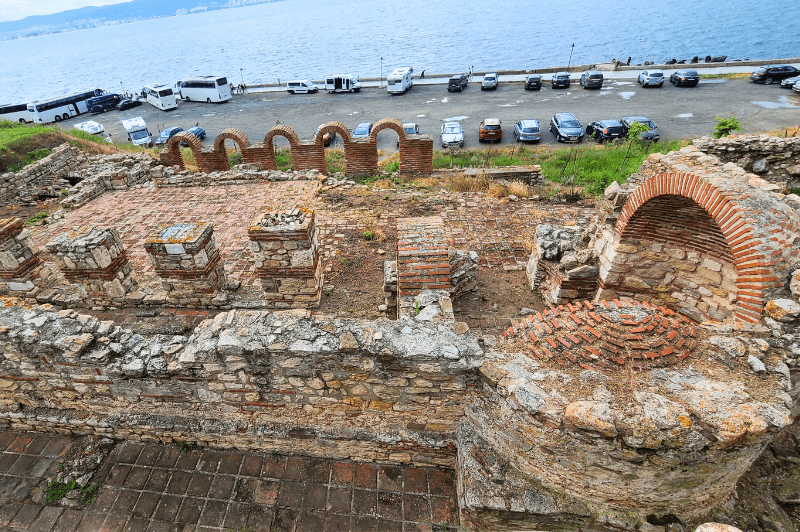

There were records of this church all the way up until the 14th century. It’s pretty crazy to think that it wasn’t ruined for nearly 800 years!
Church of St. John the Baptist 10th Century AD
Very close to the Roman Baths, is the Church of St. John the Baptist. This church was constructed sometime around the 10th century AD, and as such it is one of the oldest in Nessebar that isn’t ruined.
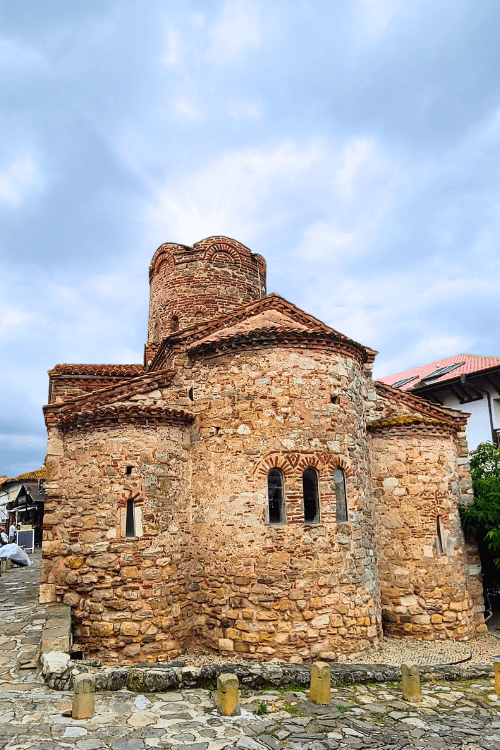

According to Visit World Heritage (which is associated with UNESCO) “..it was discovered during archaeological excavations that the church lies on the foundations of a pagan temple from the 4th century BC. There is also evidence of an Early Byzantine basilica from the 6th century on the site.”
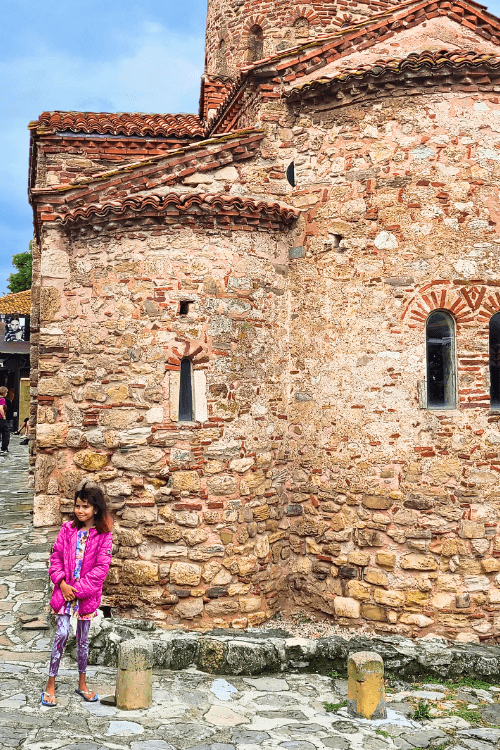

What an incredible history this little town has! There are still fragments of frescoes in this church from when the walls were in plaster and painted.
St. Stephen Church 10th Century AD
From around the same time as St. John the Baptist Church, we find the large church of St. Stephen.
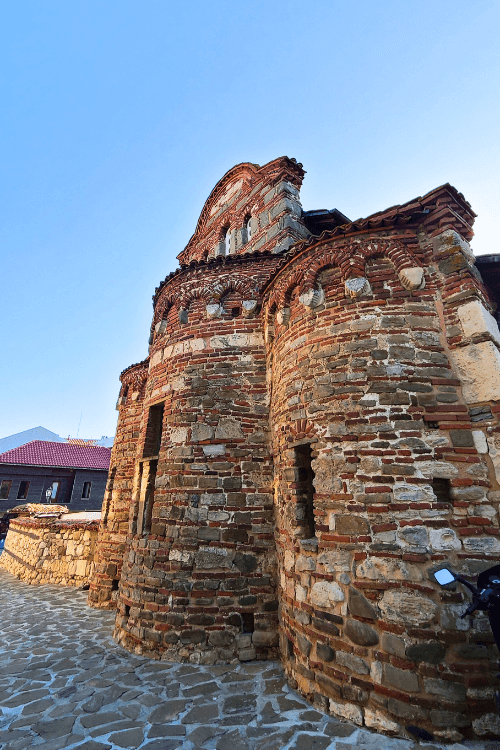

The stone on these oldest of churches is not quite as defined in color as the “newer” churches, which I find quite charming.
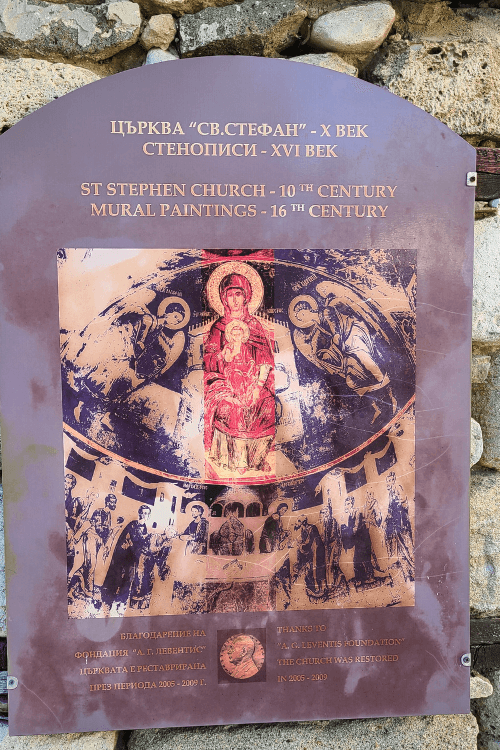

There are also murals in this church, that have survived from the 16th century. Something about the facade of this church looks quite “Wild West.”
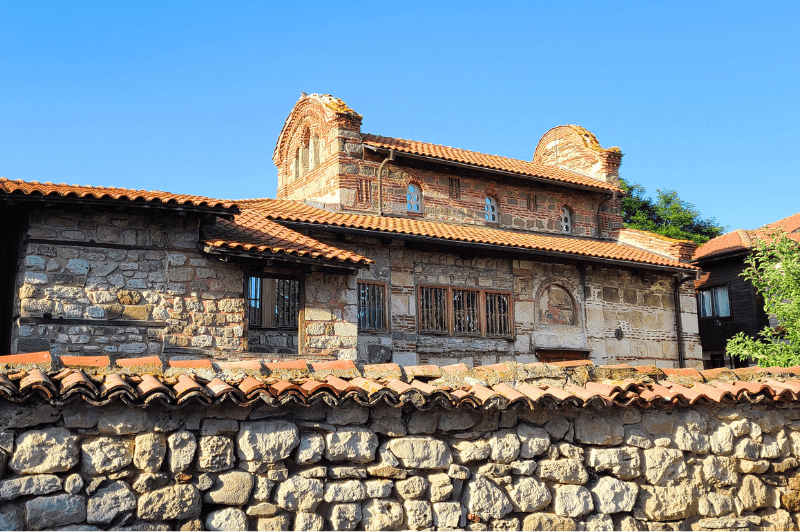

Unfortunately this church was closed when we visited this most recent time, so we didn’t see the frescoes. Whomp whomp. I believe there was a sign posted about a small fee of approx 5 lev to visit. (~2.5 Euros)
St. Michael and Gabriel, The Archangels Church 13th Century AD
Now for one of my favorite churches: The Archangels St. Michael and Gabriel Church:
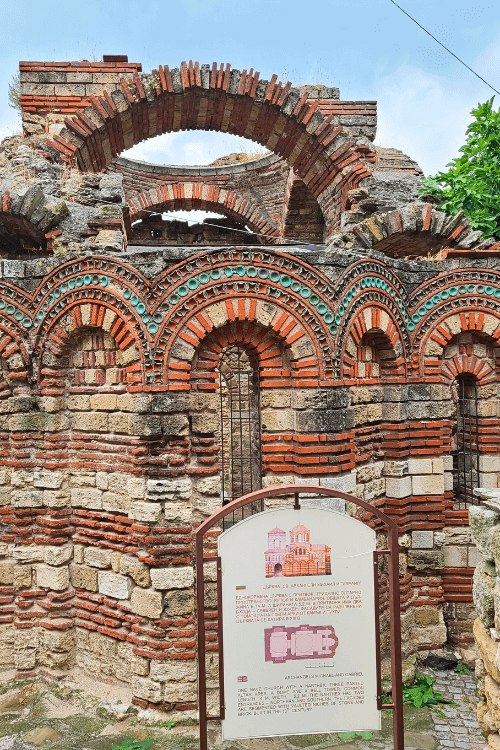

I love this one for the extra ceramic/glass decorations in a beautiful blue-green. It’s a small thing, but the little bit more color is gorgeous!
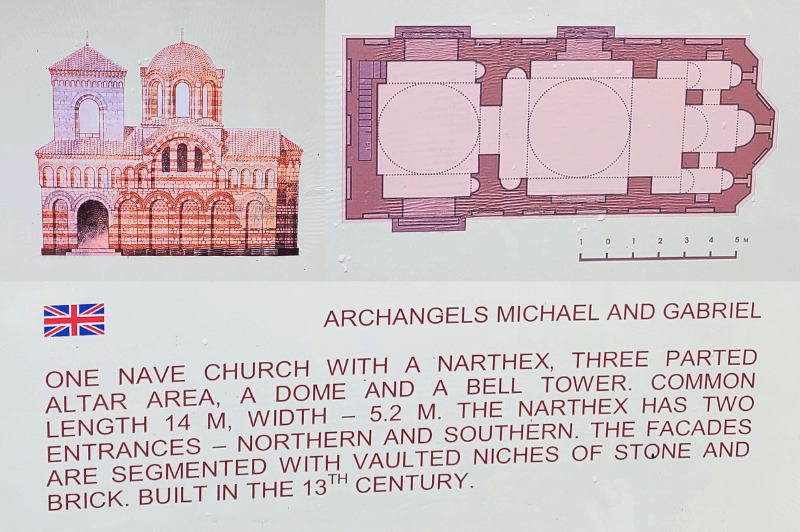

Some parts of the church are better preserved than others, and much of the turquoise decoration is missing from the sides:
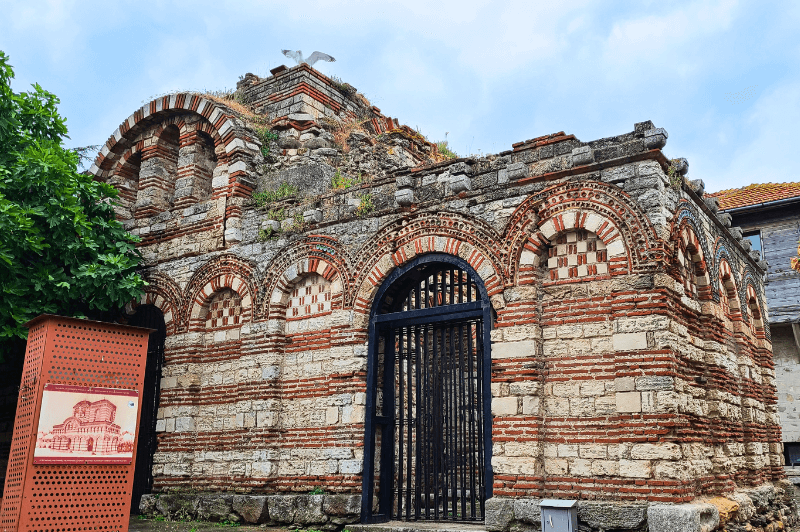

Here is an artist’s rendition of what the church would have looked like at its completion:
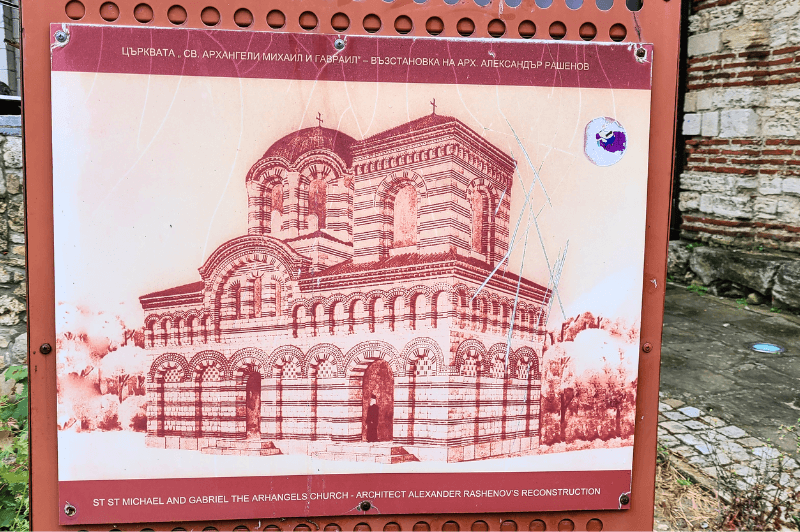

It’s hard to believe there were so many of these huge churches in old Nessebar, all operating around the same time!
Church of St. Paraskeva 13th Century AD
Another church with the beautifully colored ceramic decorations, is the Church of St. Paraskeva (also from the 13th century).
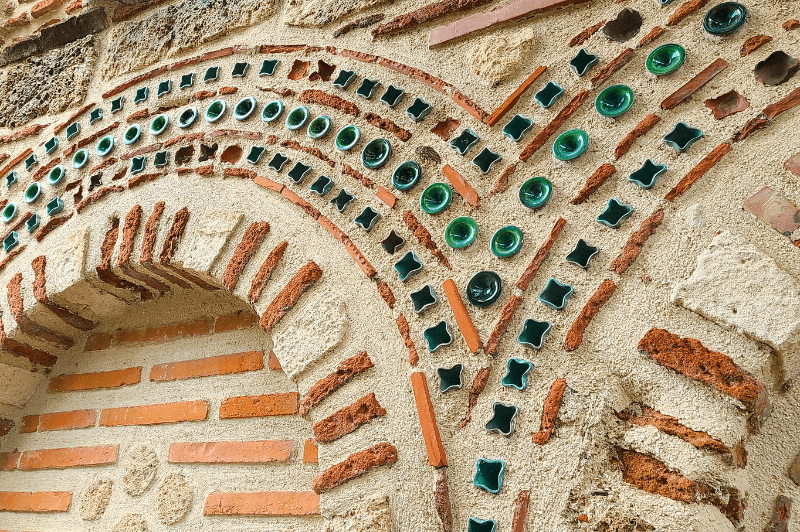

The roof on this church was replaced with something modern:
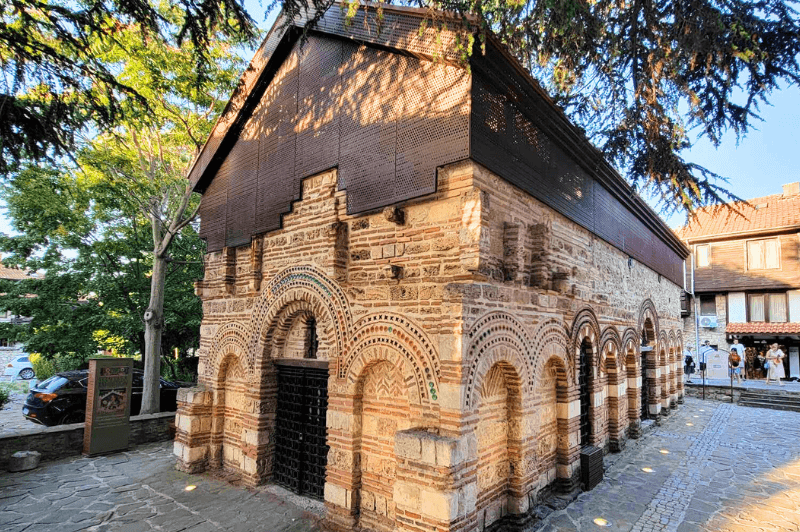

I’m sure there are some who hate this, but I actually kind of like it. It allows you to see the original parts of the structure, while still protecting it.
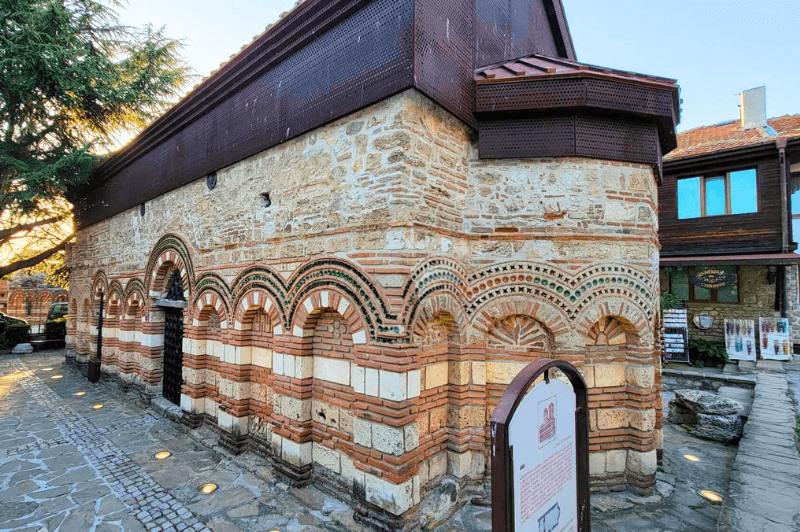

The bronzey color isn’t bad either, in my opinion.
St. John Alitourgetos Church 13th Century AD
The Church of St. John Alitourgetos has possibly the most idyllic location of all the churches in old Nessebar.
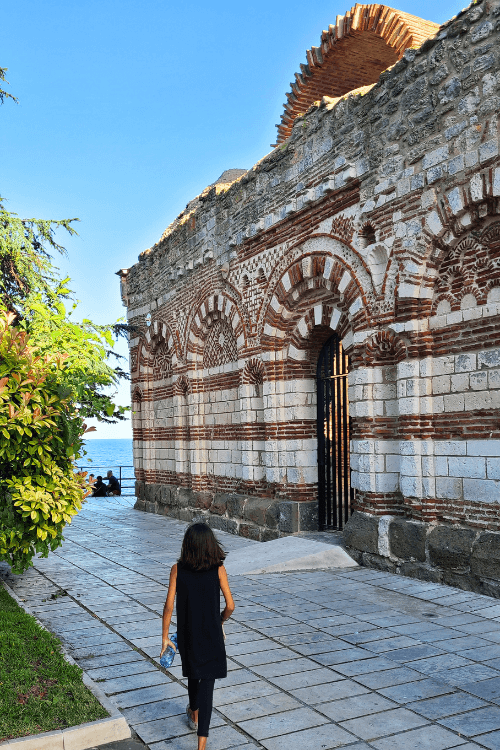

This church backs onto the ancient theater, with the seaside visible from all four sides, and an aesthetic pink building across the street.
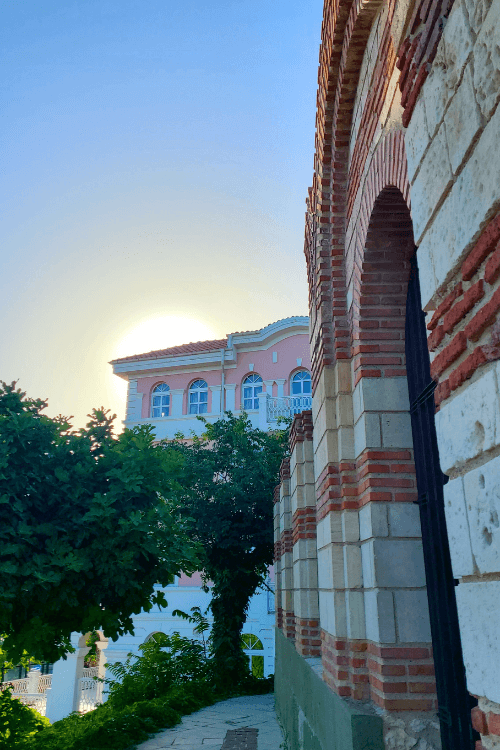

The church hasn’t fared quite as well as it’s other 13th century counterparts. The roof has long since left, and you can’t enter. There are iron bars that you can peer through to get a sense of the building.
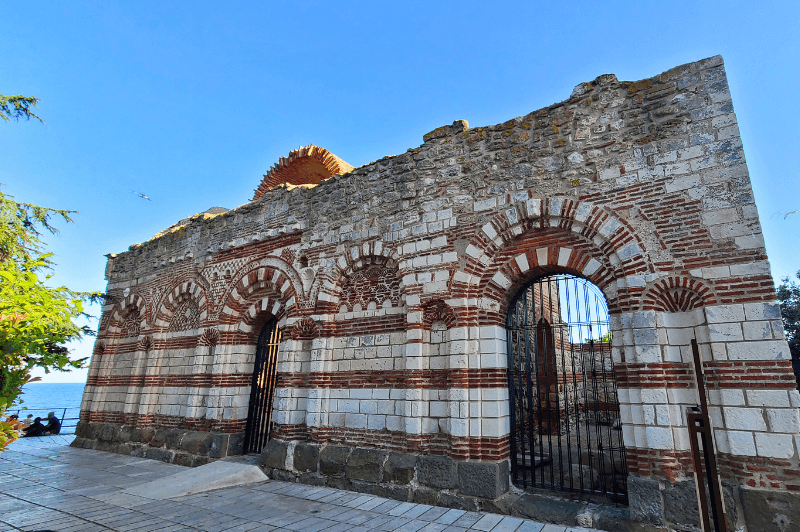

St Todor Church 13th Century AD
Also from the 13th century, is the Church of St. Todor.
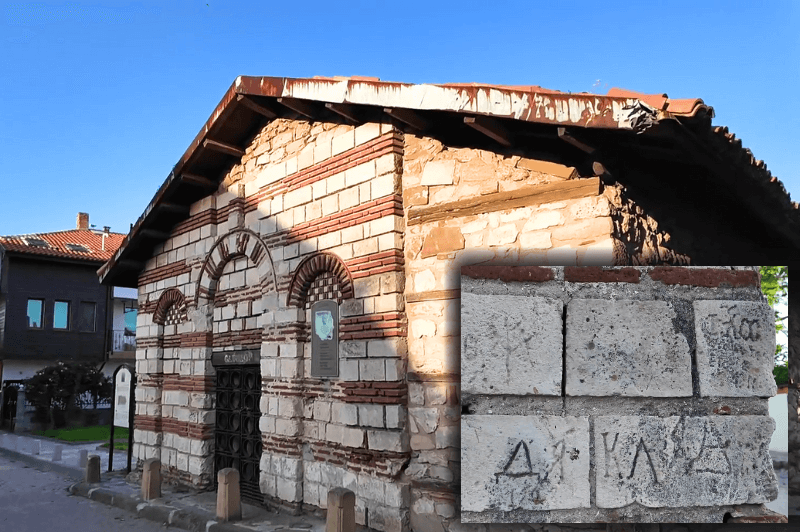

This church is probably the simplest and most unassuming to look at. Even the description is very simple:
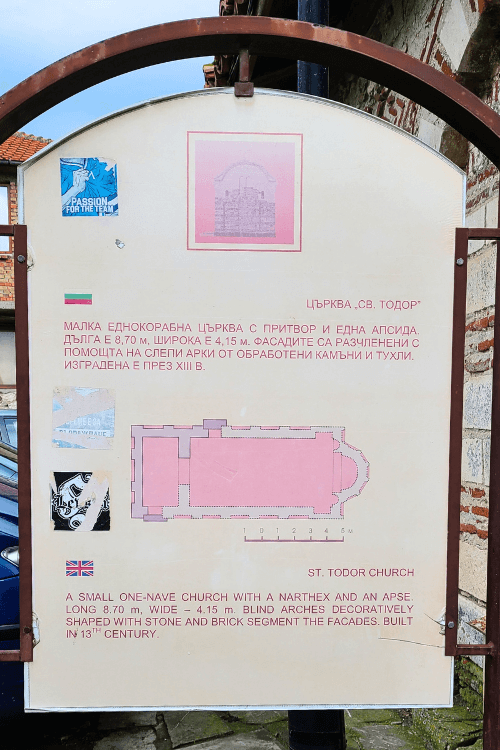

The tiny doors give it a little extra character:
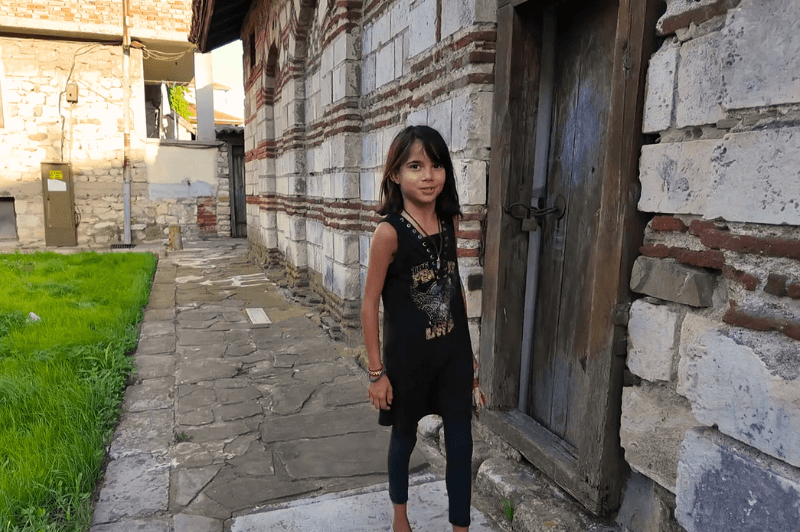

Christ Pantocrator Church 14th Century AD
Only a little later than all of these 13th century churches, came Christ Pantocrator Church. This is another ornately decorated one, and the only one with glass windows.
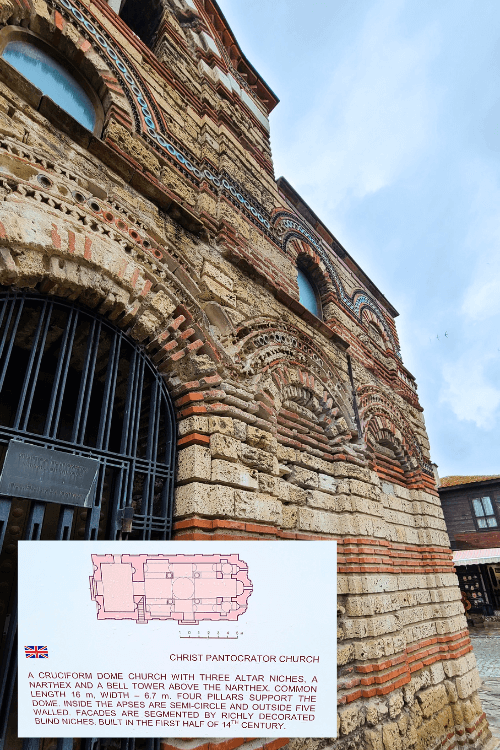

Despite being one of the “newest” churches, this one is a little crumbly.
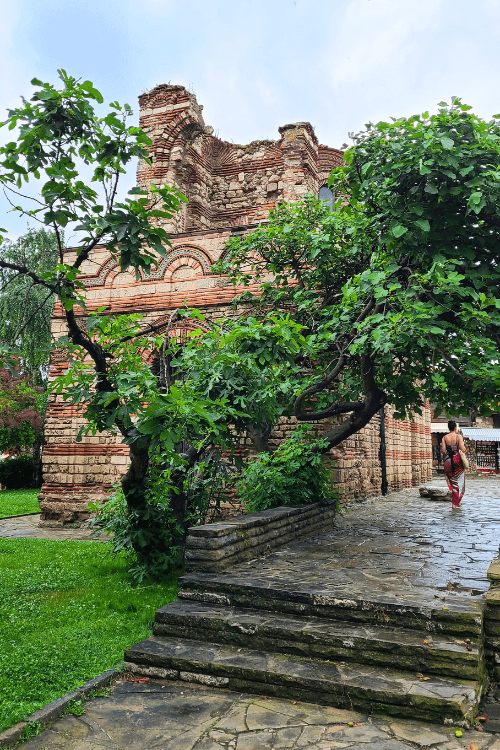

Not sure what else to say: Another old beautiful church in Nessebar. Tick!
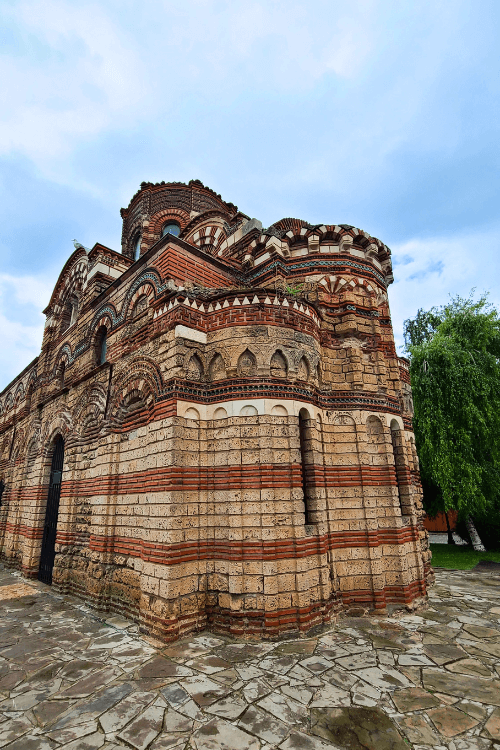

The Church Dormition of Theotokus – 1873
From the outside I would have thought that the Church Dormition of Theotokus was one of the biggest in Nessebar, but the church part is actually very small inside.
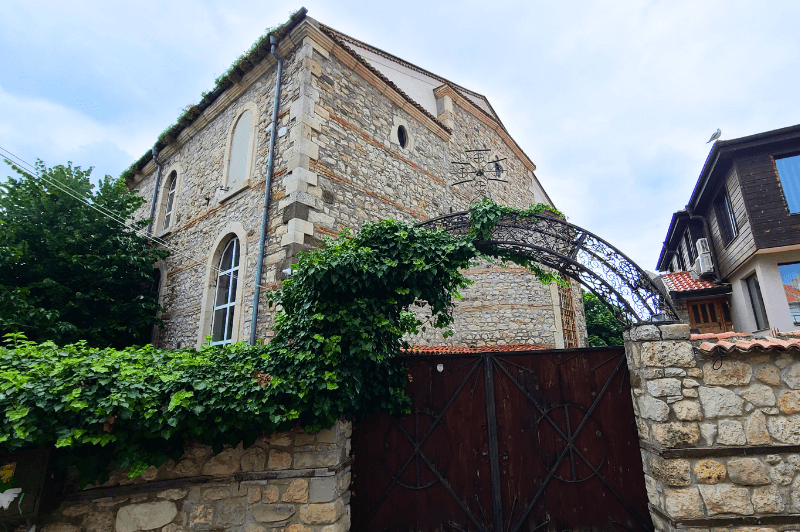

It is the newest church in Nessebar, having been built in 1873, and is the only church in current use on the peninsula. (I actually don’t think this one would specifically qualify for UNESCO, but the whole old town does, so I’m leaving it in this section.)
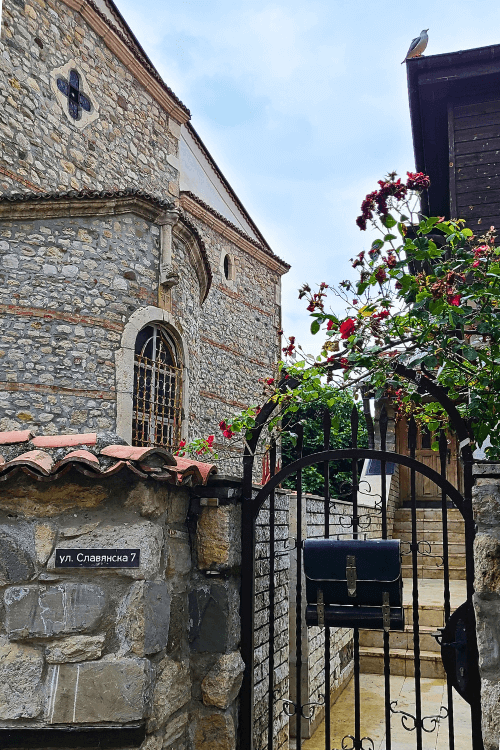

The story goes that this church was built after Mary appeared in a dream to a girl and said that a church was to be built at the location of the oldest tree in Nessebar. This happened after an icon of the weeping virgin mysteriously appeared three days in a row in the tree, even though every day it was taken to a nearby church.
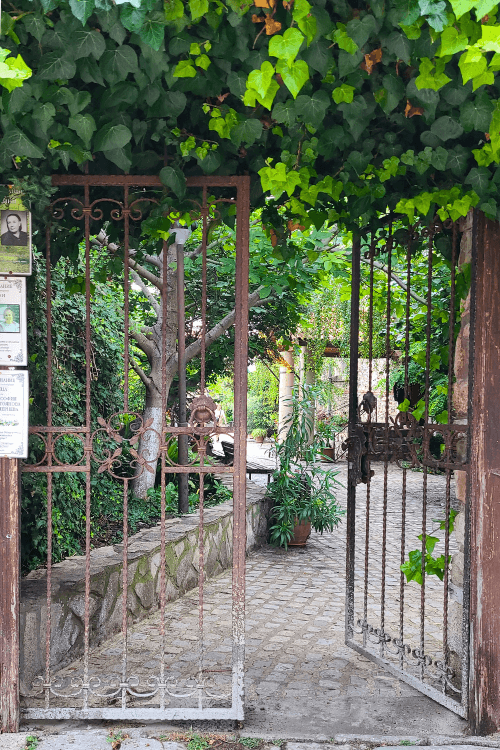

The church was built around the tree and although it eventually had to be cut down, the trunk is still there, and is said to have healing properties for pilgrims who come to lean upon it.
Believe it or not, that was only 9 of the 11 historically significant churches in Nessebar! Not sure about the other two, maybe we will catch them next time!
Best Time to Visit Nessebar
The best time to visit Nessebar is outside of the peak busy season (August) and not in the dead of winter. The seaside everywhere is incredibly busy in August, and in winter most restaurants will be closed.
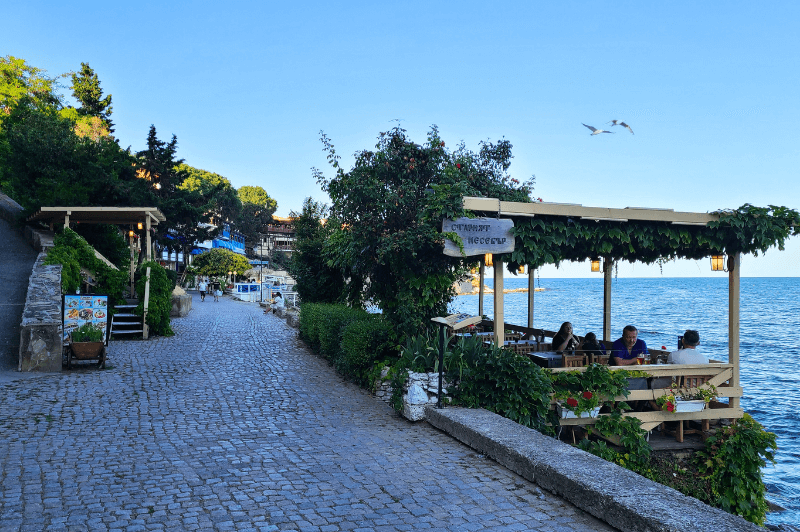

For the best experience, try to go between March and early July, or September/October. It is already quite hot in this area by June, so you may want to come earlier to escape the heat.
The best time of day to visit Nessebar in summer is around sunset. The daytime crowd is leaving, the evening crowd has not yet arrived, and the weather is starting to cool down.
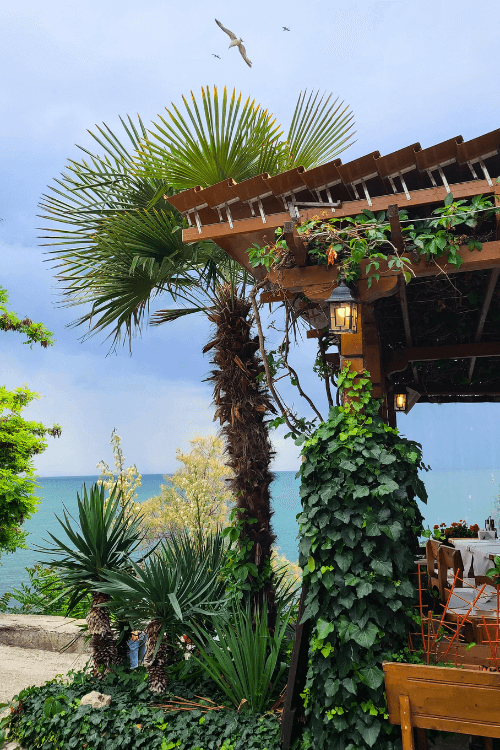

Is Nessebar Worth Visiting?
I hope I’ve already answered, but YES! Nessebar is totally worth the visit. It’s quite easy to get there from the popular resort-y destinations on Bulgaria’s Black Sea Coast. If you don’t care about seeing every single church on the list, a leisurely stroll about the town will still walk you past some amazing treasures!
We love a destination that isn’t a lot of pressure. Want to see more Bulgarian treasures? You will love these other posts:



